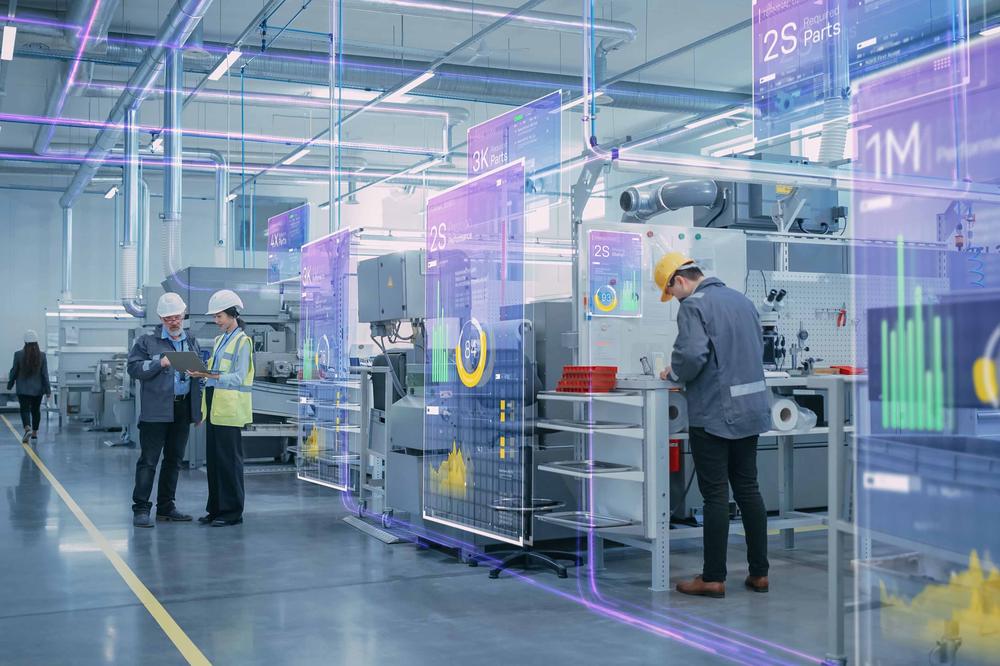
The B2B platform for the best purchasing descision. Identify and compare relevant B2B manufacturers, suppliers and retailers
Close
Filter
Result configuration
Continents
Select continent
Locations
Result types
Company type
Select company type
Industries
Select industry
Company status
Select company status preset
Number of employees
Min.
Max.
Founding year

Image Analyzer
Gloucester, United Kingdom
A
11-50 Employees
2005
Key takeaway
Image Analyzer specializes in advanced AI-powered image recognition technology, focusing on visual threat detection with high accuracy and minimal false positives. Their solutions are designed for easy integration, making it ideal for software vendors looking to enhance digital safety.
Reference
Product
Image Recognition
Harness the power of advanced AI with Image Analyzer for safer digital environments. Detect visual threats, protect customers, and gain a competitive edge.
Cognious
Chennai, India
D
1-10 Employees
2016
Key takeaway
Cognious offers a machine learning-driven API specifically for image recognition, designed to be developer-friendly and easily integrated into applications. This capability can enhance the functionality of smarter apps, making it a valuable resource for developers looking to implement image recognition features.
Reference
Product
Cognious - Product: Image Recognition
Findally
Los Angeles, United States
B
1-10 Employees
2014
Key takeaway
Findally leverages advanced image recognition and machine learning to enhance customer transparency and improve conversion rates for e-commerce businesses. Their technology generates tags for better site search and product recommendations, and it integrates seamlessly across web, iOS, and Android platforms.
Reference
Core business
Findally - True Image Recognition For E-Commerce
Looking for more accurate results?
Find the right companies for free by entering your custom query!
25M+ companies
250M+ products
Free to use
Desidoo.com S.r.l.
Turin, Italy
B
1-10 Employees
2018
Key takeaway
The company, Desidoo.com Srl, highlights its focus on image and object identification within the realm of computer vision. This process is crucial for enhancing data preparation efficiency, ultimately improving decision-making and agility in a rapidly evolving digital landscape.
Reference
Service
Image and object identification – Desidoo.com Srl
PixLab | Symisc Systems
Houston, United States
B
1-10 Employees
2017
Key takeaway
PixLab offers state-of-the-art machine vision API endpoints that utilize advanced deep learning models, enabling seamless integration of image recognition capabilities into applications. Their platform supports the storage, optimization, and delivery of various media assets, making it a comprehensive solution for developers looking to enhance their apps with vision technology.
Reference
Core business
Machine Vision & Media Processing APIs | PixLab
Eyedea Recognition
Capital City of Prague, Czechia
A
1-10 Employees
2006
Key takeaway
Eyedea Recognition specializes in AI-powered visual analysis technology, highlighting its expertise in Automatic Number Plate Recognition (ANPR) and Make Model Recognition (MMR). Their innovative solutions enhance traffic safety and support law enforcement efforts, particularly in cybercrime investigations.
Reference
Core business
Artificial Intelligence for Visual Recognition - Eyedea
Eyedea Recognition is a B2B company that develops technologies based on machine learning and AI for object recognition and delivers them worldwide.
Imobisoft
Coventry, United Kingdom
A
11-50 Employees
2009
Key takeaway
Imobisoft specializes in developing bespoke models using Artificial Intelligence and Machine Learning, with a focus on applications like Image Recognition. They emphasize the importance of understanding both the limitations and potential of this technology, highlighting its ability to enhance business processes when implemented effectively.
Reference
Service
Image Recognition | Imobisoft
Image Recognition is one of the most common forms of machine learning used to provide examples. However it is important to understand the limitations as well as the potential applications of this type of AI. When implemented correctly it can provide significant efficiencies in all types of business processes.
ARA
Clearwater, United States
B
101-250 Employees
1991
Key takeaway
Adaptive Recognition specializes in developing advanced image recognition software and imaging devices, particularly for vehicle license plate and goods transport code recognition. Their state-of-the-art technology is integral to systems in traffic management and ID security, making it highly relevant to the field of image analytics.
Reference
Product
Adaptive Recognition | Image Recognition Software
Software, Cloud service, and application for vehicle license plate, make and model, and goods transport code recognition.
Ximilar
Brno, Czechia
A
1-10 Employees
2016
Key takeaway
Ximilar specializes in image recognition and visual search, offering advanced AI solutions for smart visual data processing. Their platform automates image processing through a range of services, including deep tagging and background removal.
Reference
Core business
Ximilar: Image Recognition & Visual Search – Ximilar: Visual AI for Business
Ximilar automates image processing with state-of-the-art AI. Image Recognition, Deep Tagging, Visual Search, Background Removal and Image Upscaling up to 8x. Both ready-to-use and custom solutions.
Wide Eyes Technologies
Barcelona, Spain
A
11-50 Employees
2013
Key takeaway
Wide Eyes Technologies specializes in advanced AI technologies, particularly image recognition and deep learning, to enhance product recommendations for B2B clients in the fashion industry. Their AI-powered solutions utilize image recognition to deliver precise and relevant product suggestions, significantly improving customer engagement and sales conversion.
Reference
Core business
Wide Eyes Technologies - Visual AI Solutions for Fashion
Wide Eyes Technologies is the VISUAL AI partner of the masters of Fashion, providing visual search and image recognition to solve sales and backend.
Technologies which have been searched by others and may be interesting for you:
Image recognition is a technology that enables computers to identify and process images in a way that mimics human visual perception. By utilizing machine learning algorithms and neural networks, image recognition systems can analyze visual data, detecting objects, scenes, and even facial features. This technology is widely used in various applications, ranging from security systems and photo tagging on social media to autonomous vehicles and medical imaging diagnostics. The continuous advancements in artificial intelligence and deep learning have significantly enhanced the accuracy and efficiency of image recognition solutions, making them increasingly integral to modern technology.
Image recognition technology operates by analyzing visual data and identifying objects, faces, or scenes within images. It utilizes algorithms that process and interpret pixel data. The process begins with image acquisition, where a digital image is captured. This image is then transformed into a format that can be analyzed, often involving techniques like normalization and scaling. Once the image is pre-processed, machine learning models, particularly convolutional neural networks (CNNs), are employed to extract features and patterns from the image. These models have been trained on large datasets, enabling them to recognize and classify various elements with high accuracy. The final step involves comparing the extracted features against known patterns in a database, allowing the system to make predictions or provide insights about the image content.
1. Security and Surveillance
Image recognition is widely used in security systems to identify individuals and detect unauthorized access. It enhances surveillance capabilities by analyzing real-time video feeds for suspicious activities, thereby improving security measures.
2. Healthcare
In the healthcare sector, image recognition aids in diagnostics by analyzing medical images such as X-rays, MRIs, and CT scans. This technology helps in identifying abnormalities and assisting healthcare professionals in making informed decisions.
3. Retail and E-commerce
Retailers utilize image recognition to enhance customer experiences through visual search capabilities. Customers can upload images of products to find similar items or obtain detailed information, thereby streamlining the shopping process.
4. Autonomous Vehicles
Self-driving cars rely on image recognition to interpret their surroundings. This technology enables vehicles to detect obstacles, read traffic signs, and understand lane markings, contributing to safer navigation.
5. Social Media
Social media platforms implement image recognition to automatically tag individuals in photos and curate content based on user preferences. This enhances user engagement and improves the overall experience on these platforms.
1. Retail
Image recognition technology is widely utilized in the retail industry for inventory management and enhancing customer experiences. By analyzing images of products, retailers can streamline stock management and personalize shopping experiences through targeted marketing.
2. Healthcare
In healthcare, image recognition aids in diagnosing diseases and analyzing medical images. It assists radiologists by providing accurate readings of X-rays, MRIs, and other imaging modalities, improving patient outcomes through timely and precise diagnostics.
3. Automotive
The automotive industry leverages image recognition for advanced driver-assistance systems (ADAS). This technology enhances vehicle safety by enabling features such as lane detection, pedestrian recognition, and automated parking, contributing to the development of autonomous vehicles.
4. Security
Security and surveillance sectors benefit from image recognition for threat detection and monitoring. Facial recognition systems help identify individuals in real-time, enhancing security measures in public spaces and sensitive facilities.
5. Agriculture
In agriculture, image recognition is used for crop monitoring and disease detection. By analyzing images of crops, farmers can identify health issues early, optimizing their yield and resource management strategies.
Implementing image recognition technology presents several challenges that organizations must navigate. One significant hurdle is the need for high-quality, diverse datasets to train the models effectively. If the training data lacks variety, it can lead to biased results, diminishing the accuracy of the recognition system. Another challenge is the computational power required for processing images in real-time. This demand can strain existing infrastructure, especially for applications that require quick responses. Additionally, privacy concerns arise when handling sensitive data, necessitating compliance with regulations and ethical considerations. Addressing these issues is crucial for the successful deployment of image recognition solutions.
Some interesting numbers and facts about your company results for Image Recognition
| Country with most fitting companies | United States |
| Amount of fitting manufacturers | 7874 |
| Amount of suitable service providers | 5851 |
| Average amount of employees | 1-10 |
| Oldest suiting company | 1991 |
| Youngest suiting company | 2018 |
20%
40%
60%
80%
Some interesting questions that has been asked about the results you have just received for Image Recognition
What are related technologies to Image Recognition?
Based on our calculations related technologies to Image Recognition are Big Data, E-Health, Retail Tech, Artificial Intelligence & Machine Learning, E-Commerce
Which industries are mostly working on Image Recognition?
The most represented industries which are working in Image Recognition are IT, Software and Services, Other, Marketing Services, Automation, Defense
How does ensun find these Image Recognition Companies?
ensun uses an advanced search and ranking system capable of sifting through millions of companies and hundreds of millions of products and services to identify suitable matches. This is achieved by leveraging cutting-edge technologies, including Artificial Intelligence.